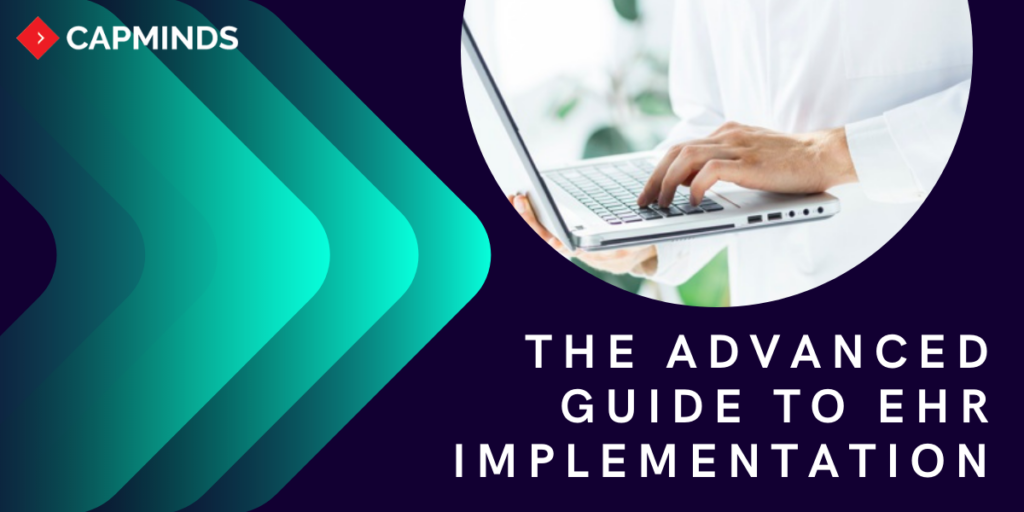The Advanced Guide To EHR Implementation
The EHR implementation and COVID -19 peak made the health system to rethink about whether to continue EHR rollout or not. Here is all about challenges and solutions in EHR implementation in 2020.
The Impact of COVID-19 in the health system
The healthcare industry had no idea that the impact of COVID 19 would have on the entire healthcare system. The medical researchers started concentrating on finding the best test to identify COVID-19 in a short time and work towards a powerful treatment while payers battled to cover these administrations and understand the pandemic’s effect on the future cost of care. At several healthcare organizations, the providers decided to continue with the EHR implementation plans as they believed the benefits of integration would help their industries overall COVID-19 response.
The individuals who decided to continue with EHR had to overcome the remote implementation challenges and new EHR training to their staff. The end-user satisfaction must be the ultimate goal for every healthcare organization. So the healthcare provides quickly learned that remote EHR implementation requires a ton of adaptability and a closer working relationship with vendor partners to ensure end-user satisfaction.
RELATED: SWITCHING TO NEW EHR DOESN’T HAVE TO BE HARD: 4 PRO TIPS
What is EHR?
To simply put, EHR (Electronic Health Record) refers to the storage of patient’s health information in a digital format. EHR makes the clinical workflow easier by providing patient-centered healthcare records available anytime for authorized users. The healthcare providers can easily able to access the complete medical history of patients including the diagnoses, medications, prescription, allergy list, documents, lab results, and more. Because of these numerous benefits it offers, EHR has become a popular tool for healthcare organizations as well as the private health sectors across the globe.
Why EHR is important?
Let’s have a small comparison between traditional health record management and EHR. With the traditional system, the patient health data will be stored in physical file folders in the doctor’s office. If a patient wishes to make a change and to move to a new doctor, the health record files need to be copied or faxed to your new doctor to give them your complete health history. Of course, every one of us clearly knows the problems arises with this data-sharing system. The patient may forget about their medications, previous doctor’s office’s contact information, and so on.
EHR digitalize your health records and make it available to the healthcare providers to access it anytime they want with full security. EHR not only benefits healthcare providers with better health outcomes but also benefits patients by minimizing their healthcare costs with easy to use EHR features. Overall, EHR results in higher patient engagement and enhanced care coordination.
EHR Implementation Challenges
The EHR implementation has numerous challenges and here are some of them you should be aware of in advance.
1.EHR Implementation Cost
| Platforms | Web ($) | Mobile, per one platform ($) |
| Design | 4,500 | 6,250 |
| Electronic document management | 6,000 | 2,000 |
| Task management | 5,000 | 3,500 |
| E-prescribing | 3,000 | 3,000 |
| Distributed access control | 2,000 | 1,600 |
| Integration with labs | 1,600 | 2,500 |
| Charting | 3,000 | 3,000 |
| Integrated chat | 8,500 | 8,500 |
| Clinical dashboard | 6,500 | 9,500 |
| Patient scheduling | 3,200 | 950 |
| Patient page | 1,300 | 1,500 |
| Reporting | 950 | 1,550 |
| Cloud hosting | 2,050 | 2,000 |
| Total | 47,600 | 45,850 |
The EHR selection, implementation, and optimization cost breakdown are – the average cost of EHR implementation ranges between $36,700 – $59,000 for web and $25,900 – $65,800 for one mobile platform. Reference (https://www.cleveroad.com/blog/how-to-create-emr-ehr-system)
2.Staff Resistance
Usually, it’s difficult to accept a change in the working environment and it also suits well for the EHR implementation process too. So it is essential that the EHR implementation process is delivered with the best promotion and marketing plan to champion the change. A comprehensive training plan will lead to successful EHR implementation. Be sure that your practice staff will able to work effectively and faster than before.
During the implementation process, the practices need to train their employees throughout the new and improved workflow process. Some practices skip this work or refuse to do it as the whole training process takes extra time, effort, and resources. But training is one of the most important parts of EHR implementation. To analyze the amount of training needed for your practice for EHR integration and check out whether your practice is ready to complete it.
RELATED: 5 BEST PRACTICES TO PREPARE STAFF FOR EMBRACING EHR
3.Data Migration
We know that EHR means everything digital. Do you know how patient records are maintained in EHR? All the patient health data need to be exported by the practice staff from paper-based documents to data to the digital records. Yes, of course migrating existing data into new EHR will be a time-consuming task but a have to do the task. There will be more and more set of documents about the medical records of thousands of patients and practice staff should be very concentrated on each patient’s health data while exporting it. Hence data migration is considered to be a major EHR implementation challenge for healthcare organizations.
4.Interoperability
Interoperability in healthcare is the process of gathering patient health data from various databases and presenting it to the healthcare provider to exchange, interpret, and use data cohesively. So the different healthcare providers can easily make use of the data via interoperability. Interoperability is a big picture and important to get a complete view of patient health records. Still, interoperability remains a huge challenge for healthcare providers to transfer of information among multiple providers.
RELATED: PRIORITIZING YOUR HEALTHCARE INTEROPERABILITY : EXPERT’S GUIDE
10 Important Features For EHR System Development
- Electronic Document Management
- Task Management
- Patient profile
- Prescription Management
- Distributed Access Control
- Lab integration
- Charting
- Clinical dashboard
- Scheduling
- Cloud hosting
RELATED: WHAT INFORMATION DOES AN EHR CONTAIN?
Steps to Successful EHR implementation
EHR implementation planning:
Planning makes the implementation process successful. So first create a detailed plan from top to bottom executive steps and assign the responsibilities for the capable team members and create a space for mutual support.
RELATED: HOW TO SELECT AN EHR VENDOR
Team Co-ordination for successful implementation:
The EHR implementation process requires team collaboration from all the practice members including IT vendors, consultants, physicians, administrative staff, providers, and more. Share the process goal with all the members and create a timeframe to complete the process in a successful way. Also, create a team of expert leaders who have experience in implementing new IT systems in different fields to guide the implementation team.
Consider patients during implementation:
Patient experience is important for enhanced practice workflow so think about in what way EHR implementation benefits patients to provide value-based care.
Final Thoughts
The EHR system should be specially designed to fit into the current work process of the healthcare provider and it needs the support of expert IT specialists who know about the clinical work processes in a better way. Planning to switch to a new EHR? Contact CapMinds Today




